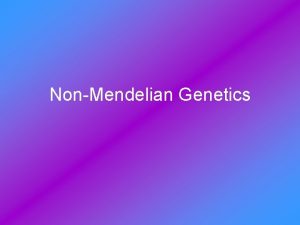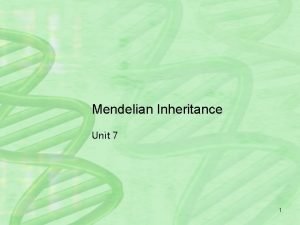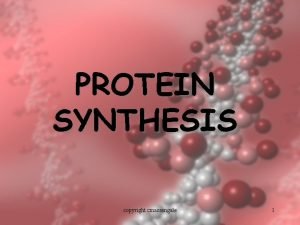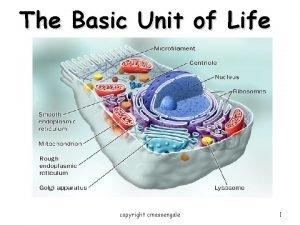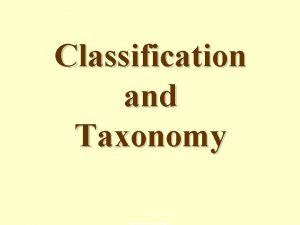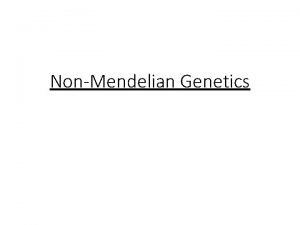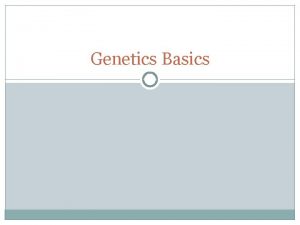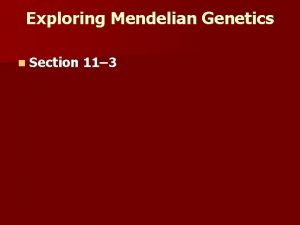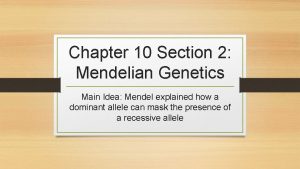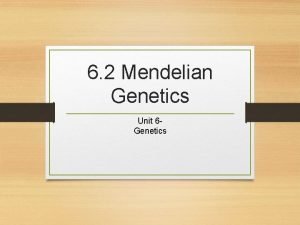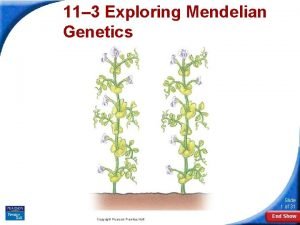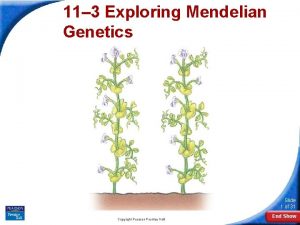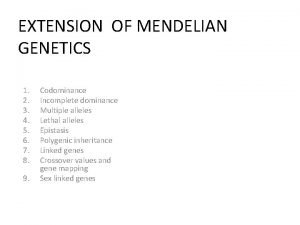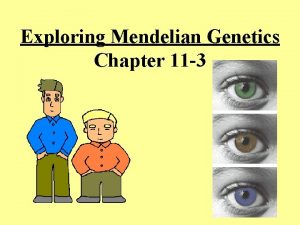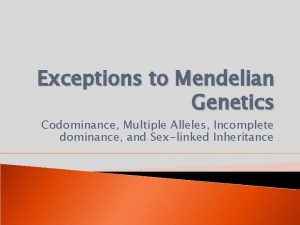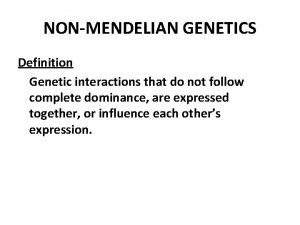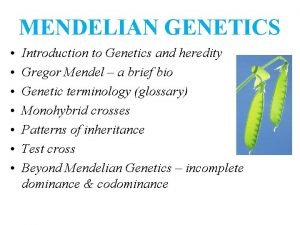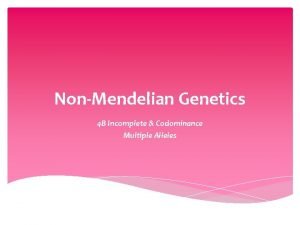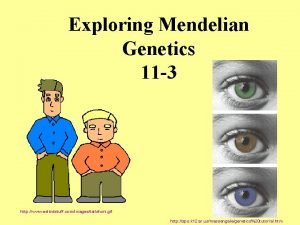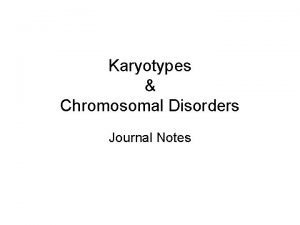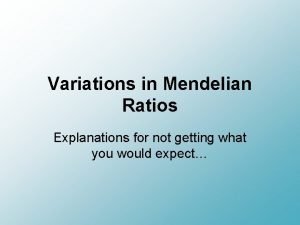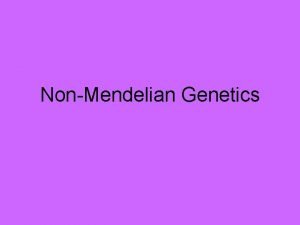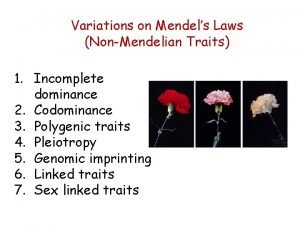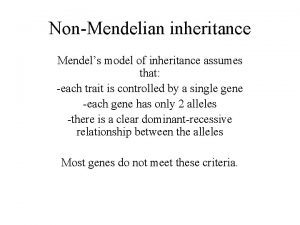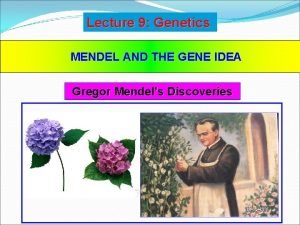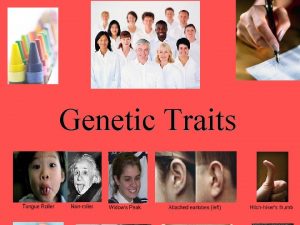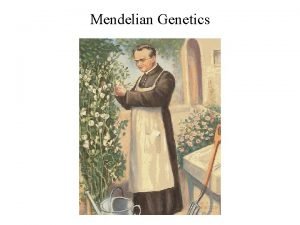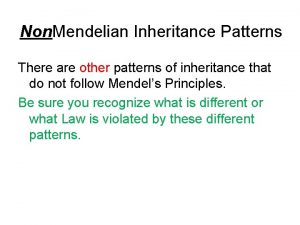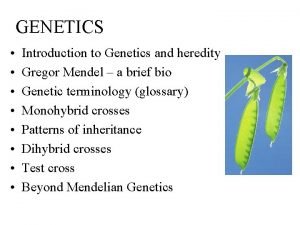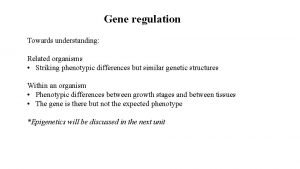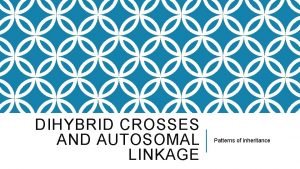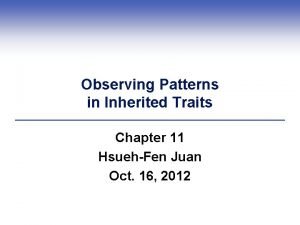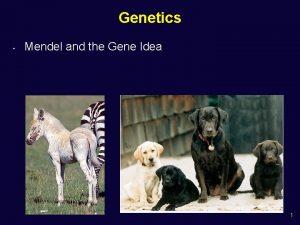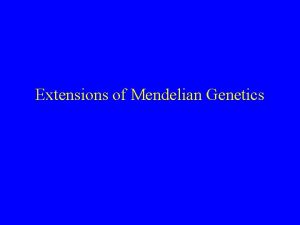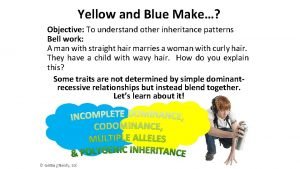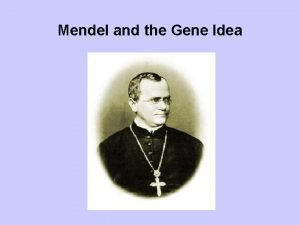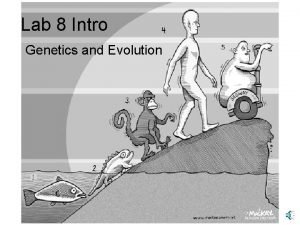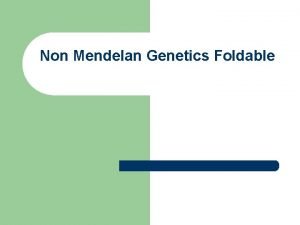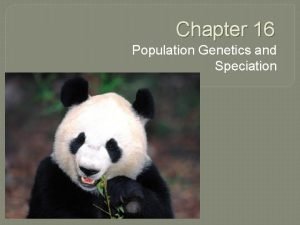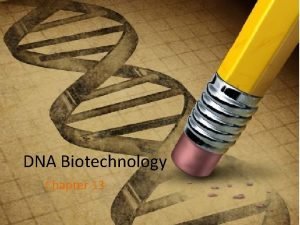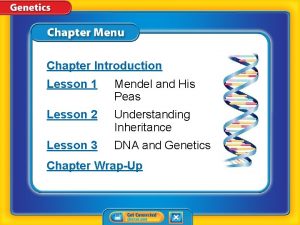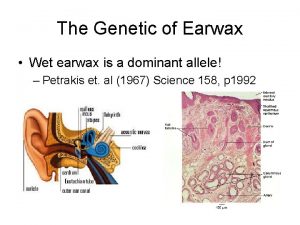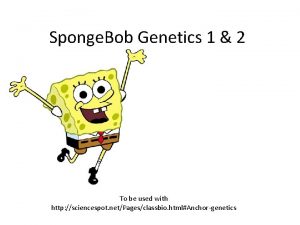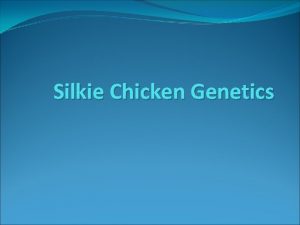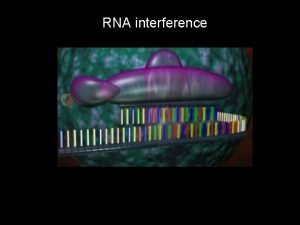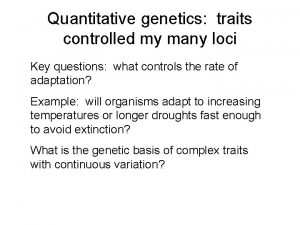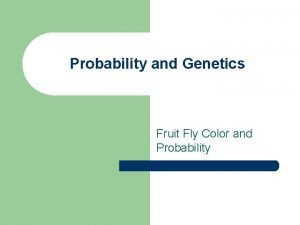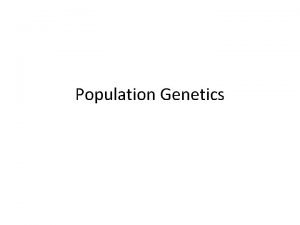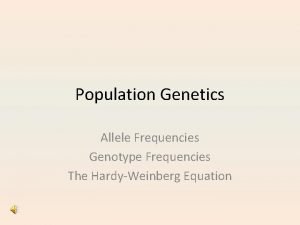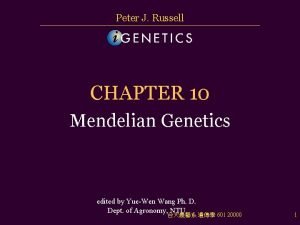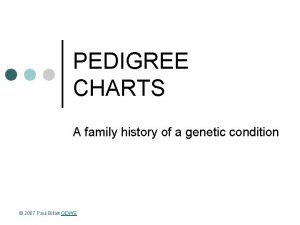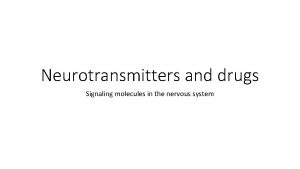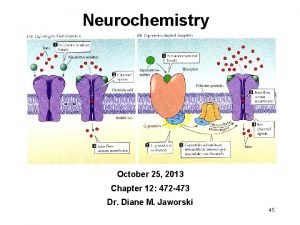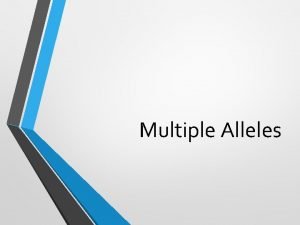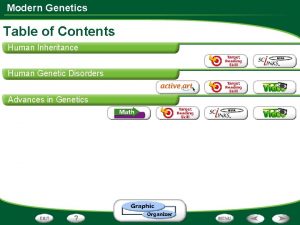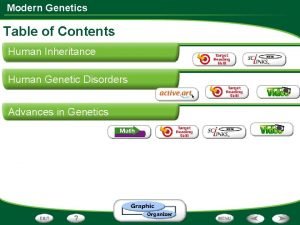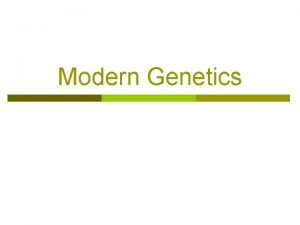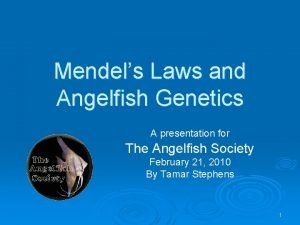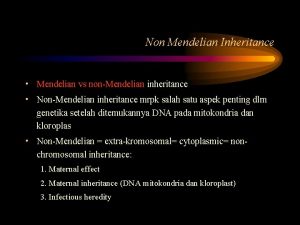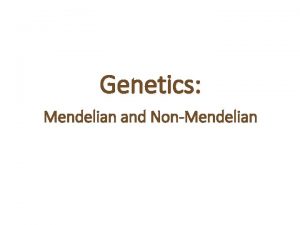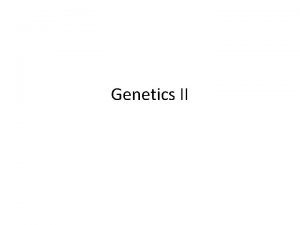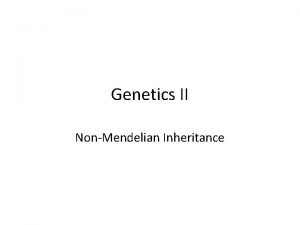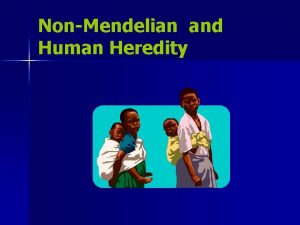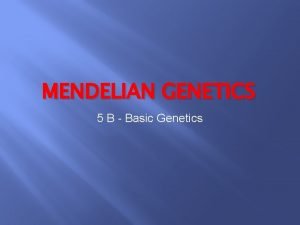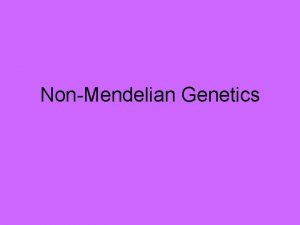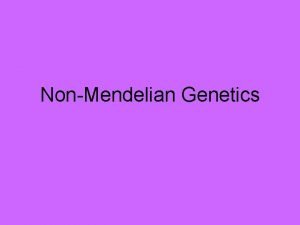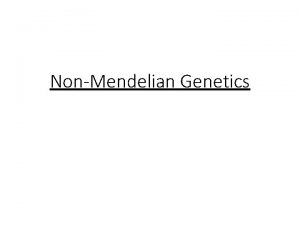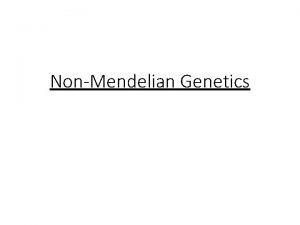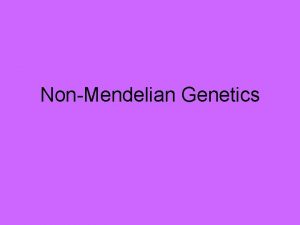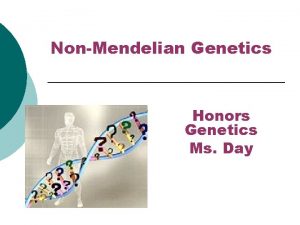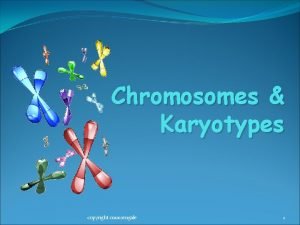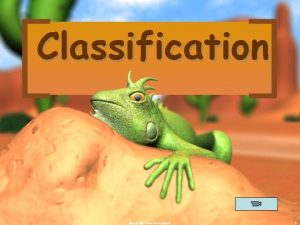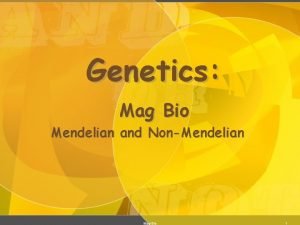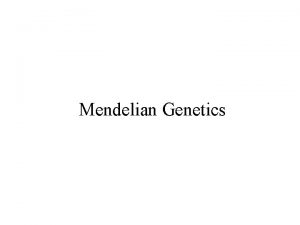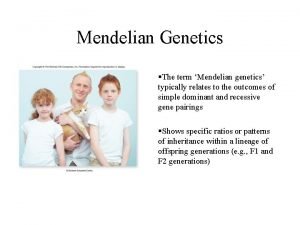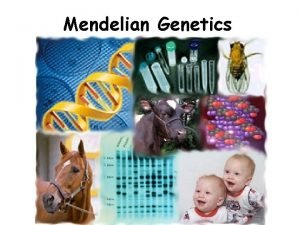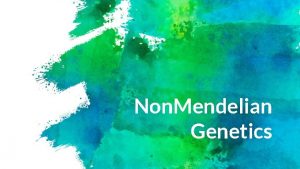Genetics Mendelian and NonMendelian copyright cmassengale 1 Mendelian



















































































- Slides: 83

Genetics: Mendelian and Non-Mendelian copyright cmassengale 1

Mendelian Genetics copyright cmassengale 2

Gregor Mendel (1822 -1884) Responsible for the “Laws” governing Inheritance of Traits copyright cmassengale 3

§§ § § Gregor Johann Mendel Austrian monk Studied the inheritance of traits in pea plants Developed the “laws” of inheritance Mendel's work was not recognized until the turn of the 20 th century copyright cmassengale 4

§ Gregor Johann Mendel Between 1856 and 1863, Mendel cultivated and tested some 28, 000 pea plants He found that the plants' offspring retained traits of the parents Called the “Father of Genetics" § § copyright cmassengale 5

Site of Gregor Mendel’s experimental garden in the Czech Republic copyright cmassengale 6

Particulate Inheritance § § Mendel stated that physical traits are inherited as “particles” Mendel did not know that the “particles” were actually Chromosomes & DNA copyright cmassengale 7

§ § § Genetic Terminology Trait - any characteristic that can be passed from parent to offspring Heredity - passing of traits from parent to offspring Genetics - study of heredity copyright cmassengale 8

Types of Genetic Crosses § § Monohybrid cross - cross involving a single trait e. g. flower color Dihybrid cross - cross involving two traits e. g. flower color & plant height copyright cmassengale 9

Punnett Square Used to help solve genetics problems copyright cmassengale 10

copyright cmassengale 11

§ § § Designer “Genes” Alleles - two forms of a gene (dominant & recessive) Dominant - stronger of two genes expressed in the hybrid; represented by a capital letter (R) Recessive - gene that shows up less often in a cross; represented by a lowercase letter (r) copyright cmassengale 12

§ § More Terminology Genotype - gene combination for a trait (e. g. RR, Rr, rr) Phenotype - the physical feature resulting from a genotype (e. g. red, white) copyright cmassengale 13

Genotype & Phenotype in Flowers Genotype of alleles: R = red flower r = yellow flower All genes occur in pairs, so 2 alleles affect a characteristic Possible combinations are: Genotypes RR Rr rr Phenotypes RED YELLOW copyright cmassengale 14

§ Genotypes Homozygous genotype - gene combination involving 2 dominant or 2 recessive genes (e. g. RR or rr); also called pure Heterozygous genotype - gene combination of one dominant & one recessive allele (e. g. Rr); also called hybrid § copyright cmassengale 15

Genes and Environment Determine Characteristics copyright cmassengale 16

Mendel’s Pea Plant Experiments copyright cmassengale 17

Why peas, Pisum sativum? § § Can be grown in a small area Produce lots of offspring Produce pure plants when allowed to self -pollinate several generations Can be artificially cross-pollinated copyright cmassengale 18

Reproduction in Flowering Plants Pollen contains sperm Produced by the stamen Ovary contains eggs Found inside the flower Pollen carries sperm to the eggs for fertilization Self-fertilization can occur in the same flower Cross-fertilization can occur between flowers copyright cmassengale 19

Mendel’s Experimental Methods Mendel hand-pollinated flowers using a paintbrush He could snip the stamens to prevent self -pollination Covered each flower with a cloth bag He traced traits through the several generations copyright cmassengale 20

How Mendel Began Mendel produced pure strains by allowing the plants to selfpollinate for several generations copyright cmassengale 21

Eight Pea Plant Traits Seed shape --- Round (R) or Wrinkled (r) Seed Color ---- Yellow (Y) or Green (y) Pod Shape --- Smooth (S) or wrinkled (s) Pod Color --- Green (G) or Yellow (g) Seed Coat Color ---Gray (G) or White (g) Flower position---Axial (A) or Terminal (a) Plant Height --- Tall (T) or Short (t) Flower color --- Purple (P) or white (p) copyright cmassengale 22

copyright cmassengale 23

copyright cmassengale 24

Mendel’s Experimental Results copyright cmassengale 25

Did the observed ratio match theoretical ratio? The theoretical or expected ratio of plants producing round or wrinkled seeds is 3 round : 1 wrinkled Mendel’s observed ratio was 2. 96: 1 The discrepancy is due to statistical error The larger the sample the more nearly the results approximate to theoretical ratio copyright cmassengale 26

Generation “Gap” Parental P 1 Generation = the parental generation in a breeding experiment. F 1 generation = the first-generation offspring in a breeding experiment. (1 st filial generation) From breeding individuals from the P 1 generation F 2 generation = the second-generation offspring in a breeding experiment. (2 nd filial generation) From breeding individuals from the F 1 generation copyright cmassengale 27

Following the Generations Cross 2 Results in Cross 2 Hybrids Pure all get Plants Hybrids 3 Tall & 1 Short TT x tt Tt TT, Tt, tt copyright cmassengale 28

Monohybrid Crosses copyright cmassengale 29

P 1 Monohybrid Cross Trait: Seed Shape Alleles: R – Round r – Wrinkled Cross: Round seeds x Wrinkled seeds RR x rr r r R Rr Rr Genotype: Rr Phenotype: Phenotype Round Genotypic Ratio: All alike Phenotypic Ratio: All alike copyright cmassengale 30

P 1 Monohybrid Cross Review § §§ § Homozygous dominant x Homozygous recessive Offspring all Heterozygous (hybrids) Offspring called F 1 generation Genotypic & Phenotypic ratio is ALL ALIKE copyright cmassengale 31

F 1 Monohybrid Cross Trait: Seed Shape Alleles: R – Round r – Wrinkled Cross: Round seeds x Round seeds Rr x Rr R RR Rr rr Genotype: RR, Rr, rr Phenotype: Phenotype Round & wrinkled G. Ratio: 1: 2: 1 P. Ratio: 3: 1 copyright cmassengale 32

F 1 Monohybrid Cross Review §§ §§ § Heterozygous x heterozygous Offspring: 25% Homozygous dominant RR 50% Heterozygous Rr 25% Homozygous Recessive rr Offspring called F 2 generation Genotypic ratio is 1: 2: 1 Phenotypic Ratio is 3: 1 copyright cmassengale 33

What Do the Peas Look Like? copyright cmassengale 34

…And Now the Test Cross Mendel then crossed a pure & a hybrid from his F 2 generation This is known as an F 2 or test cross There are two possible testcrosses: Homozygous dominant x Hybrid Homozygous recessive x Hybrid copyright cmassengale 35

F 2 Monohybrid Cross st (1 ) Trait: Seed Shape Alleles: R – Round r – Wrinkled Cross: Round seeds x Round seeds RR x Rr R RR Rr Genotype: RR, Rr Phenotype: Phenotype Round Genotypic Ratio: 1: 1 Phenotypic Ratio: All alike copyright cmassengale 36

F 2 Monohybrid Cross (2 nd) Trait: Seed Shape Alleles: R – Round r – Wrinkled Cross: Wrinkled seeds x Round seeds rr x Rr R r r Rr Rr r rr rr Genotype: Rr, rr Phenotype: Phenotype Round & Wrinkled G. Ratio: 1: 1 P. Ratio: 1: 1 copyright cmassengale 37

F 2 Monohybrid Cross Review §§ §§ Homozygous x heterozygous(hybrid) Offspring: 50% Homozygous RR or rr 50% Heterozygous Rr Phenotypic Ratio is 1: 1 Called Test Cross because the offspring have SAME genotype as parents copyright cmassengale 38

Practice Your Crosses Work the P 1, F 1, and both F 2 Crosses for each of the other Seven Pea Plant Traits copyright cmassengale 39

Mendel’s “Laws” (Rules) copyright cmassengale 40

Results of Monohybrid Crosses Inheritable factors or genes are responsible for all heritable characteristics Phenotype is based on Genotype Each trait is based on two genes, one from the mother and the other from the father True-breeding individuals are homozygous ( both alleles) are the same copyright cmassengale 41

Law of Dominance In a cross of parents that are pure for contrasting traits, only one form of the trait will appear in the next generation. All the offspring will be heterozygous and express only the dominant trait. RR x rr yields all Rr (round seeds) copyright cmassengale 42

Law of Dominance copyright cmassengale 43

Law of Segregation During the formation of gametes (eggs or sperm), the two alleles responsible for a trait separate from each other. Alleles for a trait are then "recombined" at fertilization, producing the genotype for the traits of the offspring. copyright cmassengale 44

Applying the Law of Segregation copyright cmassengale 45

Law of Independent Assortment Alleles for different traits are distributed to sex cells (& offspring) independently of one another. This law can be illustrated using dihybrid crosses. copyright cmassengale 46

Dihybrid Cross A breeding experiment that tracks the inheritance of two traits. Mendel’s “Law of Independent Assortment” a. Each pair of independently b. Formula: 2 n alleles segregates during gamete formation (n = # of heterozygotes) copyright cmassengale 47

Question: How many gametes will be produced for the following allele arrangements? Remember: 2 n (n = # of heterozygotes) 1. Rr. Yy 2. Aa. Bb. CCDd 3. Mm. Nn. Oo. PPQQRrss. Tt. Qq copyright cmassengale 48

Answer: 1. Rr. Yy: 2 n = 22 = 4 gametes RY Ry r. Y ry 2. Aa. Bb. CCDd: 2 n ABCD ABCd a. BCD a. BCd = 23 = Ab. CD ab. CD 8 gametes Ab. Cd ab. CD 3. Mm. Nn. Oo. PPQQRrss. Tt. Qq: 2 n = 26 = 64 gametes copyright cmassengale 49

Dihybrid Cross Traits: Seed shape & Seed color Alleles: R round r wrinkled Y yellow y green Rr. Yy x Rr. Yy RY Ry r. Y ry All possible gamete combinations copyright cmassengale 50

Dihybrid Cross RY Ry r. Y ry copyright cmassengale 51

Dihybrid Cross RY RY RRYY Ry RRYy r. Y Rr. YY ry Rr. Yy Ry r. Y ry RRYy Rr. YY Rr. Yy RRyy Rr. Yy Rryy Rr. Yy rr. YY rr. Yy Rryy rr. Yy rryy copyright cmassengale Round/Yellow: 9 Round/green: 3 wrinkled/Yellow: 3 wrinkled/green: 1 9: 3: 3: 1 phenotypic ratio 52

Dihybrid Cross Round/Yellow: 9 Round/green: 3 wrinkled/Yellow: 3 wrinkled/green: 1 9: 3: 3: 1 copyright cmassengale 53

Test Cross A mating between an individual of unknown genotype and a homozygous recessive individual. Example: bb. C__ x bbcc BB Bb bb = = = brown eyes blue eyes CC = curly hair Cc = curly hair cc = straight hair b. C b___ bc copyright cmassengale 54

Test Cross Possible results: bc b. C b___ C bb. Cc or copyright cmassengale bc b. C b___ c bb. Cc bbcc 55

Summary of Mendel’s laws LAW DOMINANCE SEGREGATION INDEPENDENT ASSORTMENT PARENT CROSS OFFSPRING TT x tt tall x short 100% Tt tall x x Tt tall Rr. Gg x Rr. Gg round & green x round & green copyright cmassengale 75% tall 25% short 9/16 round seeds & green pods 3/16 round seeds & yellow pods 3/16 wrinkled seeds & green pods 1/16 wrinkled seeds & yellow pods 56

Non-Mendelian Genetics copyright cmassengale 57

Incomplete Dominance F 1 hybrids have an appearance somewhat in between the phenotypes of the two parental varieties. Example: snapdragons (flower) red (RR) x white (rr) r r RR = red flower rr = white flower R R copyright cmassengale 58

Incomplete Dominance r r R Rr Rr produces the F 1 generation All Rr = pink (heterozygous pink) copyright cmassengale 59

Incomplete Dominance copyright cmassengale 60

Codominance Two alleles are expressed (multiple alleles) in heterozygous individuals. Example: blood type 1. 2. 3. 4. type A B AB O = = IAIA or IAi IBIB or IBi I AI B ii copyright cmassengale 61

Multiple Allelic Traits Some traits controlled by multiple alleles The gene exists in several allelic forms (but each individual only has two) ABO blood types The alleles: IA = A antigen on red cells, anti-B antibody in plasma IB = B antigen on red cells, anti-A antibody in plasma I = Neither A nor B antigens, both antibodies Phenotype (Blood Type) A (actually AA or AO) B (actually BB or BO) AB O (actually OO) Genotype IAIA or IAi IBIB or IBi I AI B ii

Multiple Alleles More than 2 genes in a population (not individual) for a trait. EX- Blood Types copyright cmassengale 63

Codominance Problem Example: homozygous male Type B (IBIB) x heterozygous female Type A (IAi) IA i IB I AI B I Bi copyright cmassengale 1/2 = IAIB 1/2 = IBi 64

Another Codominance Problem • Example: male Type O (ii) x female type AB (IAIB) IA IB i I Ai I Bi copyright cmassengale 1/2 = IAi 1/2 = IBi 65

Codominance Question: If a boy has a blood type O and his sister has blood type AB, what are the genotypes and phenotypes of their parents? boy - type O (ii) AB (IAIB) X copyright cmassengale girl - type 66

Codominance Answer: IA IB i i I AI B ii Parents: genotypes = IAi and IBi phenotypes = A and B copyright cmassengale 67

Sex-linked Traits (genes) located on the sex chromosomes Sex chromosomes are X and Y XX genotype for females XY genotype for males Many sex-linked traits carried on X chromosome copyright cmassengale 68

Sex-linked Traits Example: Eye color in fruit flies Sex Chromosomes fruit fly eye color XX chromosome - female Xy chromosome - male copyright cmassengale 69

Sex-linked Trait Problem Example: Eye color in fruit flies (red-eyed male) x (white-eyed female) X RY x X r Remember: the Y chromosome in males does not carry traits. Xr Xr RR = red eyed Rr = red eyed R X rr = white eyed XY = male Y XX = female copyright cmassengale 70

Sex-linked Trait Solution: Xr XR XR Xr Y Xr XR Xr Xr Y 50% red eyed female 50% white eyed male copyright cmassengale 71

Female Carriers copyright cmassengale 72

Sex Linked Disorders Hemophilia Red/ Green colorblindness Duchenne Muscular Dystrophy copyright cmassengale 73

Human Genetic Disorders Autosome - Any chromosome other than a sex chromosome Genetic disorders caused by genes on autosomes are called autosomal disorders Some genetic disorders are autosomal dominant An individual with AA has the disorder An individual with Aa has the disorder An individual with aa does NOT have disorder Other genetic disorders are autosomal recessive An individual with AA does NOT have disorder An individual with Aa does NOT have disorder, but is a carrier An individual with aa DOES have the disorder

Autosomal Recessive Pedigree Chart

Autosomal Dominant Pedigree Chart

Autosomal Recessive Disorders Tay-Sachs Disease Progressive deterioration of psychomotor functions. Lipid accumulation in brain cells. Death in childhood Cystic Fibrosis Mucus in bronchial tubes and pancreatic ducts is particularly thick and viscous Phenylketonuria (PKU) Lack enzyme for normal metabolism of phenylalanine. Mental retardation Albinism- lack of pigment (melanin) Galactosemia- Accumulation of galactose in tissues; liver damage Sickle Cell (homozygous)

Autosomal Dominant (ONLY 1 dom allele causes expression of these disorders) Achondroplasia- dwarfism Alzheimers- Mental deterioration Huntington’s- Mental deterioration copyright cmassengale 78

Polygenic Inheritance Occurs when a trait is governed by two or more genes having different alleles Each dominant allele has a quantitative effect on the phenotype These effects are additive Result in continuous variation of phenotypes

Height in Human Beings

Frequency Distributions in Polygenic Inheritance

Terminology Pleiotropy- omit for Honors A gene that affects more than one characteristic of an individual Sickle-cell (incomplete dominance) Codominance More than one allele is fully expressed ABO blood type (multiple allelic traits) Epistasis- omit for Honors A gene at one locus interferes with the expression of a gene at a different locus Human skin color (polygenic inheritance)

• • • Other topics: Omit for Honors X Chromosome Inactivation (Barr bodies) Gene linkage- Genes are on the same c’some and often passed together Gene mapping (crossover data) Terms- monoecious (plants); hermaphrodite (animals) Fork line method (See next PPt) copyright cmassengale 83
 Nonmendelian traits
Nonmendelian traits Difference between mendelian and non mendelian inheritance
Difference between mendelian and non mendelian inheritance Cmassengale
Cmassengale Cmassengale
Cmassengale Genus species
Genus species Multiple alleles
Multiple alleles Section 11-3 exploring mendelian genetics answer key
Section 11-3 exploring mendelian genetics answer key Mendelian traits
Mendelian traits Extending mendelian genetics chapter 7
Extending mendelian genetics chapter 7 Section 11-3 exploring mendelian genetics
Section 11-3 exploring mendelian genetics Chapter 10 section 2 mendelian genetics answer key
Chapter 10 section 2 mendelian genetics answer key Mendelian genetics punnett square
Mendelian genetics punnett square 11.3 exploring mendelian genetics
11.3 exploring mendelian genetics 11-3 exploring mendelian genetics answers
11-3 exploring mendelian genetics answers Extending mendelian genetics answer key
Extending mendelian genetics answer key Pprr x pprr punnett square
Pprr x pprr punnett square Section 11-3 exploring mendelian genetics
Section 11-3 exploring mendelian genetics Horse xnxn
Horse xnxn Chapter 7 vocabulary practice extending mendelian genetics
Chapter 7 vocabulary practice extending mendelian genetics Pleitropy
Pleitropy Codominant genes
Codominant genes Mendel's three laws
Mendel's three laws Chapter 10 sexual reproduction and genetics
Chapter 10 sexual reproduction and genetics Hybrid vs purebred
Hybrid vs purebred The scientific study of heredity *
The scientific study of heredity * Codominance
Codominance How to do a punnett square for color blindness
How to do a punnett square for color blindness Mendelian genetics concept map
Mendelian genetics concept map Chapter 7 extending mendelian genetics vocabulary practice
Chapter 7 extending mendelian genetics vocabulary practice 11-3 exploring mendelian genetics
11-3 exploring mendelian genetics Difference between mendelian and chromosomal disorders
Difference between mendelian and chromosomal disorders Mendelian ratios
Mendelian ratios Non mendelian inheritance
Non mendelian inheritance Mendelian randomisation
Mendelian randomisation Non mendelian law
Non mendelian law Non mendelian law
Non mendelian law Cystic fibrosis mendelian inheritance
Cystic fibrosis mendelian inheritance Mendelian traits
Mendelian traits Postulat mendel
Postulat mendel Probability laws govern mendelian inheritance
Probability laws govern mendelian inheritance Mendelian inheritance patterns
Mendelian inheritance patterns Mendelian laws
Mendelian laws Mendel
Mendel Allelic and non allelic interaction
Allelic and non allelic interaction Mendelian dihybrid test cross
Mendelian dihybrid test cross Mendelian traits
Mendelian traits Mendel's experimental design
Mendel's experimental design Mendelian
Mendelian Baldness genotype
Baldness genotype Getting nerdy llc answer key
Getting nerdy llc answer key Section 1 meiosis
Section 1 meiosis Multiplication and addition rule genetics
Multiplication and addition rule genetics Similar
Similar Introduction to genetic analysis tenth edition
Introduction to genetic analysis tenth edition Genetics is the study of heredity
Genetics is the study of heredity Chapter 22 genetics and genetically linked diseases
Chapter 22 genetics and genetically linked diseases Sexual reproduction and genetics section 1 meiosis
Sexual reproduction and genetics section 1 meiosis Chromosomes genes and basic genetics foldable answer key
Chromosomes genes and basic genetics foldable answer key Population genetics and speciation worksheet answer key
Population genetics and speciation worksheet answer key Chapter 10 sexual reproduction and genetics
Chapter 10 sexual reproduction and genetics Parent genotype
Parent genotype Genetics and biotechnology chapter 13
Genetics and biotechnology chapter 13 Mendel and his peas lesson 1
Mendel and his peas lesson 1 Chapter 17 the beginning of the life cycle
Chapter 17 the beginning of the life cycle Earwax type genetics
Earwax type genetics Bikini bottom genetics worksheet
Bikini bottom genetics worksheet Silkie genetics
Silkie genetics Forward genetics
Forward genetics Genetics model
Genetics model Parent offspring regression
Parent offspring regression Probability in genetics
Probability in genetics Learn.genetics.utah/content/addiction/mouse
Learn.genetics.utah/content/addiction/mouse What is fst
What is fst Genotype vs allele frequency
Genotype vs allele frequency Branch diagram dihybrid cross
Branch diagram dihybrid cross Allele key
Allele key Http://learn.genetics.utah.edu/content/addiction/
Http://learn.genetics.utah.edu/content/addiction/ Http://learn.genetics.utah.edu/content/addiction/
Http://learn.genetics.utah.edu/content/addiction/ What is multiple alleles
What is multiple alleles Human inheritance modern genetics answer key
Human inheritance modern genetics answer key Genetics graphic organizer
Genetics graphic organizer Modern genetics human inheritance answer key
Modern genetics human inheritance answer key Angelfish genetics
Angelfish genetics Mendel monk
Mendel monk
